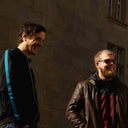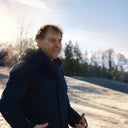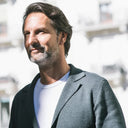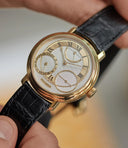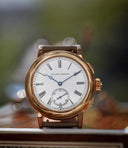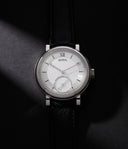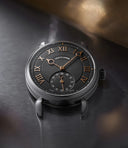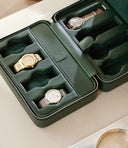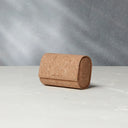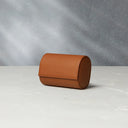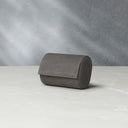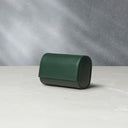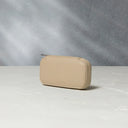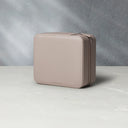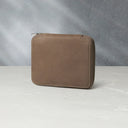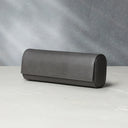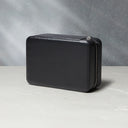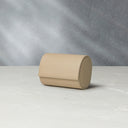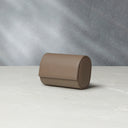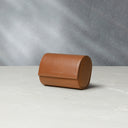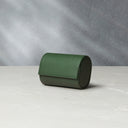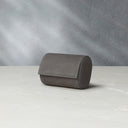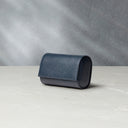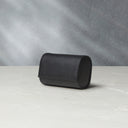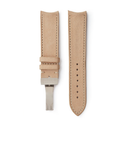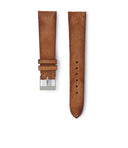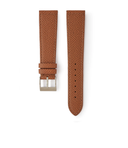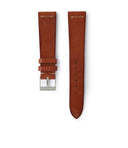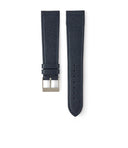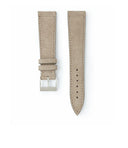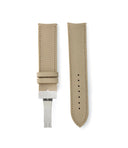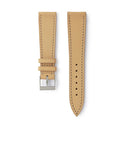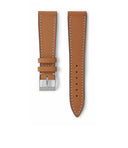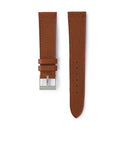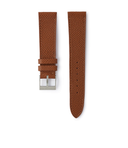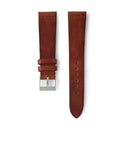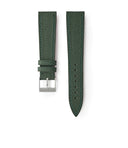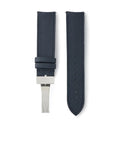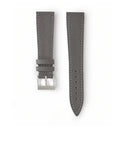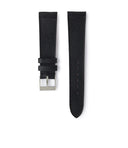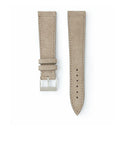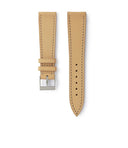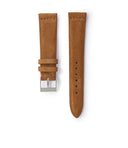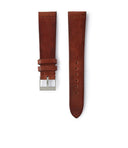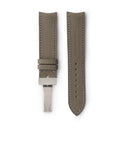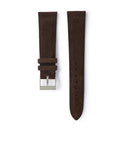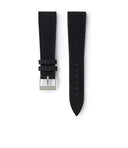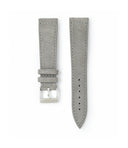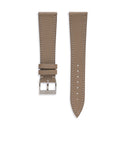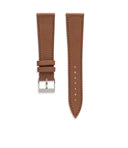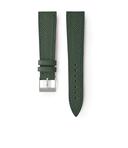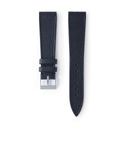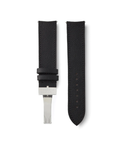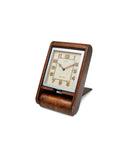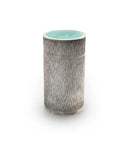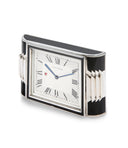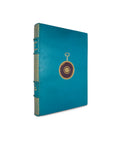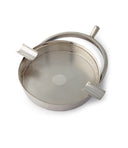
Our Advice for Better Watch Photography
By Raj Aditya Chaudhuri
The watches that we source and the articles we write may appear to be our main source of output. However, the one thing that runs through them all, and elevates each of them, is the photography. This has long been a gateway for many to discover us and the watches we present.
Many of the collectors we speak to tell us of the fun and frustrating process of capturing their collection, so we wanted to share some tips, tricks and techniques that could be employed to create a style that isn’t just aesthetically pleasing but also highlights watches in their truest light. Some of these we employ ourselves while others could serve to approximate the effects we achieve in our studio.
Photography is often a passion that crosses over with horology, and we hope that some of this advice presents you with a new idea to experiment with next time – whether it’s with a prized DSLR or a simple smartphone.
The Look
When contemplating what it is that sets a watch photograph apart, our photographer concludes it primarily has to do with lighting. “The images we take, for instance, are typified by the use of harsh light projected onto the watches and objects. It creates long shadows, something that adds a level of dimensionality to the frames,” our photographer says. “This, mixed in with soft light, means each image has shadows and highlights [that often play] with each other, so the overall appearance isn’t flat.”

A lifestyle shot where we play with light and shadow to allow the watch to shine.
The aesthetic, our photographer says, was born out of the practical need to show off watches and their physical attributes honestly and accurately, simultaneously constructing an aesthetically pleasing “lifestyle” setting around them. While they tend to be more characterful, lifestyle images are not always suited to showing off the intricate details of a watch. Our photographer’s solution then was to marry lifestyle and product photography to create a look that was unique to us. “Our look isn’t a lifestyle shot, nor is it a studio shot. It is something in between those two,” they say.
As our photographer drew up the concept of what this could look like, they had some assistance from our office location. “Our previous offices had a glass ceiling, with incredible direct natural light filtering in throughout the day,” they explained. “The bold, long shadows this kind of light created served as inspiration. It only made sense to utilise this natural light to create something that was totally different from anything else that was being done back then.”
The Light
However, not everyone has access to a glass roof and those that do might find that natural light, as hard to compete with as it is, is not always a reliable partner. The next best thing in this case could be a source that replicates the qualities of the midday sun. “We use the Dedolight DLED7 cinematic light that you can shape with projection systems also from the same brand,” says our photographer. “We also make use of Goboland filters that sculpt the light, the way leaves, glass and window blinds do [with] sunlight. [They are] crucial to creating that natural lifestyle feel of our shots. This really helps replicate the natural way sunlight behaves when bouncing off surfaces or passing through translucent materials.

The Dedolight DLED7 replicates natural light and provides the kind of visual continuity needed for a consistent aesthetic.
“The Dedolight we use also has a quality that natural light does not: continuity. There have been instances in the past where we have been shooting a watch using natural light and it got overcast. When the clouds moved on a few minutes later, the quality and the angle of light had changed. If you’re after consistency in the look across a shoot, it is advisable to work with light you can control.”
Other times, our photographer is inspired by the way light reflects off the surface of objects, such as a silver hip flask, or how light passes through the glass case of a desk clock. While there are purpose-built tools for this job, the same effect can be gained from objects that you may already have. Including these in the lifestyle shots can serve two purposes – they can add visual interest to the frame and also help sculpt light, our photographer explains. “Using these objects can help focus the light or reflect it on to the watch,” they add. “The eye tends to be drawn to the object that the light is directly on.”


An example of how placing a couple of reflectors can be used with natural light in an enclosed space.
Whether working with natural light or an artificial source, parts of the watch will be brightly illuminated while other parts will be in the shadows. This is remedied by using a light-coloured surface or a reflector to shine light on to the shaded parts This is typically done by placing the reflector opposite to the light source, with the watch in the middle.
The Composition
Getting the correct composition is just as important as creating the optimum lighting conditions for a pleasing watch photograph. This involves spending time closely examining the design details to create the backdrop that would bring out those attributes in a shot. The process is one our photographer also regularly employs, as they explain: “I examine the watches closely, look at dial texture, the colour palette, case shape, the style, the era, and what makes it unique and desirable. This informs how you can think about the composition of the shot – which colours, materials, and kind of light you should be using.”
They then go through our collection of objects, acquired over the years, choosing between a silver box with intricate guilloche; a piece of leather with interesting graining; a classic Leica camera with a body that has patinated over time; a Jaeger-LeCoultre eight-day desk clock with a glass case; a 14k yellow-gold cigar cutter; a pair of onyx cufflinks; some potted succulent plants; and a library of coffee-table books featuring attractive fonts, colours, and textures.


A useful tip when considering objects to include is to think about their attributes – colour, texture, shape – that would best complement the watch.
There doesn’t need to be a direct relationship between the objects that you dress an image with and the watch you’re shooting. To our photographer, these objects represent little more than complimentary forms that highlight the subject of the photo. “We are not using these as the objects that they are, but as abstract backdrops for the lifestyle shots of watches,” they explain. “While sometimes you might be able to tell what the object in the backdrop is, a lot of the time we highlight only an aspect of it – its colour, texture, or shape – because it is complementary to the watch’s aesthetic.”
For instance, a watch with a square or rectangular shape and sharp edges would be best complemented by similarly angular objects, says our photographer. “Similarly, watches with rounded cases are best highlighted by softer, rounded objects,” they said. Adding objects with a closer link to the watch – be that in terms of the era they are from or the design principles that informed both – could also serve to enrich the final frame. Thinking about everyday objects, be they around the home or workspace, in these terms will undoubtedly yield a plethora of objects with characteristics that could lend themselves to creating a complementary backdrop to your next shoot.

Three different watches and backdrops that best complement their case shapes, colours and materials.
However, it is key to never let the other elements in the composition overpower the subject. While using elements sparingly is one way to achieve this, another is to keep everything but the watch in soft focus. “This is even more crucial if the watch features complications that means the dial is ‘busy’,” they say. “When sub-dials or skeletonisation is involved, keeping the light soft helps take the edge off the busyness of the dial. It also means the background blends away, which is crucial to ensuring the composition doesn’t look crowded.”

When photographing watches with complications visible on the dial side as well as others with a lot of visual detail, it is best to keep the composition as simple and clean as possible.
While using direct, harsh light on the watches creates long shadows that give the shots a sense of dimensionality, another simple way to do this is by using humble Blu Tack. It can often be deployed effectively to lift watches above other background objects in the frame, creating a clear focal point.

Creating a sense of dimension goes a long way in adding to the visual interest in a photograph. To the amateur watch photographer, the humble Blu Tack can be a useful ally in this.
While considering the frame, our photographer advises also thinking about the shape and finishing of the watch for a different reason. “If the watch has a rounded, galet, or cushion-shaped case with a highly polished finish, or a domed sapphire crystal without anti-reflective coating, it will reflect objects all around it,” they say. “This is especially [true] if the dial is black or dark coloured. Being aware of this, and the effect it might have on your shot, will help you pick the right environment in which to set up your frame.”

While it may seem like an obvious thing, always remember to wipe down the dial after setting up your frame and again before pressing on the shutter button.
It goes without saying that before setting up a shot and again before pressing the shutter button, you should wipe down your watch with an anti-static microfibre cleaning cloth. For lifestyle shots, our photographer pairs their Canon R5 with a 100mm macro lens, a tack-sharp setup that picks up even the smallest specks of dust. “This will be especially crucial when you are shooting detailed macro shots,” they say. “Despite your best efforts, you will still find specks of dust on the crystal when you look at the photograph on your computer screen. For this reason, editing software is so helpful.”
The Wrist Shot
Another popular form of watch photography is the wrist shot. In our case, like with our other photography, this staple of the lifestyle watch shot is also taken in a controlled studio setting at our offices so that the shot, while aesthetically pleasing, is also informative about the details and condition of the watch. While it might not always be possible to create such an environment, there are a few guidelines you can follow to ensure the best results.

The arms folded with textures and layers surrounding the watch draws the eye in to the dial.
For such shots, our photographer advises using a lens with a shorter focal length and pairing it with the lighting principles recommended in previous sections. While they do think the wrist shot can be a bit more restrictive in terms of backdrop, it does not mean you can’t get creative with it. “The colours of the shirt, trousers, and jacket present opportunities. As do the poses,” they say. “The tuck, with your arms crossed, is a tried-and-tested pose. It focuses the eye on the watch, but there is plenty of texture all around it – the folds of the shirt, maybe the trousers, a little bit of skin. Seen from this angle also gives a good sense of the dimensions of the watch. This kind of still life composition is definitely my favourite.”

Holding the watch by its bracelet or strap is a great way to show off the intricate details, while having a clear human element in the frame.
Another pose that our photographer recommends, aside from the classic but simple straight-on wrist shot, involves holding the watch by the strap or bracelet. Admittedly, doing this by yourself would require a tripod, but it is a shot with a clear human element that isn’t just a watch on the wrist. Then there are other popular wrist shots such as the pocket shot, although admittedly, this is one we tend to use less. “This is simply because in it the watch appears at an angle that is not ideal for showing off details or accurately conveying a sense of its dimension,” our photographer says.
While such shots can be taken using the studio lighting set up our photographer outlined, when shooting outdoors it is the late afternoon or early evening light – lower, warmer, and softer – that is most suitable.

A classic wrist shot outdoors in natural light, with a backdrop with complementary colours.
While wrist shots add a human element, it’s best to make the rest of the frame as uncomplicated as possible, removing anything extraneous to the focus of the photograph. Using the same principles as before, wardrobe choices that will enhance the watch go a long way. “Go with something complementary and soft,” our photographer says. “For instance, if we are shooting a gold watch with blue hands, we will try to have blue as the main colour of the outfits, whether in the trousers or on the shirt. I also like to see layers, like a shirt and a jacket, because it gives the shot a bit more depth.”

Grey serves as a blank canvas that works well with most watches while navy is another favourite. Try to avoid bold patterns and stripes as they draw attention away from the subject of the shot.
There are a few colours our photographer recommends reaching out for. “Dark blues or greys work well with most watches,” they say. “Grey offers a nice, almost blank canvas that you can use to style almost every kind of watch.” However, it is best to avoid black. “It absorbs light and as a result doesn’t always show off the dimensions or details of the watch case accurately,” they add. Also best left in the wardrobe is clothing featuring stripes and bold prints that can distract from the subject of the shot.
Editing the Shots
Making use of practical edits is a must for our photographer, as it makes each image a far more accurate representation of the watch’s true aesthetic, which has always been our ultimate goal. The watch, depending on the position of the wrist and the way light is hitting it at that moment, reveals its different details. Showcasing these intricacies of the design in a photograph is often challenging.
“Some watches have interesting shapes, rich textures, and unusual coloured dials and showcasing all of that in the same lighting conditions is near impossible,” our photographer says. “In such cases, I recommend using different shots showcasing the hands, the dial texture, the colour, and the case details, [then] creating a composite of those images.” Admittedly this is a more intensive approach that makes sense for a business like ours sensitive to the dangers of mischaracterising an aspect of a watch’s design, which is a risk when they are often bought by clients without being seen in real life first. We appreciate that this might not be a necessary step in the workflow for amateur watch photographers. However, it could prove useful to a minority of our community dedicated to perfecting their craft.
Our photographer also recommends using software to do other hygiene edits – adjusting the brightness and contrast of the image, and colour-correcting shots so the shades in the photograph accurately reflect the experience of seeing the watch in person.
However, they draw the ethical line at editing out imperfections resulting from regular wear, however minor they may be. “For instance, harsh light on a case can reveal micro scratches more than they would under regular inspection by the naked eye,” they say. “However, this is the honest condition of the watch so I would not recommend editing these out in any commercial setting.”
Their commitment to showcasing the original attributes of the watch also means our photographer does not employ, nor do they recommend any filters or presets that are popular on social media. This is because doing so would inevitably change the colour of the watch and overall appearance.
Final Touch

There are many ways to shoot a good watch shot. We hope some of these techniques prove to be sources of inspiration.
We hope these techniques and ideas, some of which we have experimented with and developed over the years, serve as sources of inspiration. While individually these techniques may not come as a revelation to photography enthusiasts, applied together, they can often be used to create a visually interesting experience. We hope you have fun experimenting with them to create your own unique style of watch shots.








